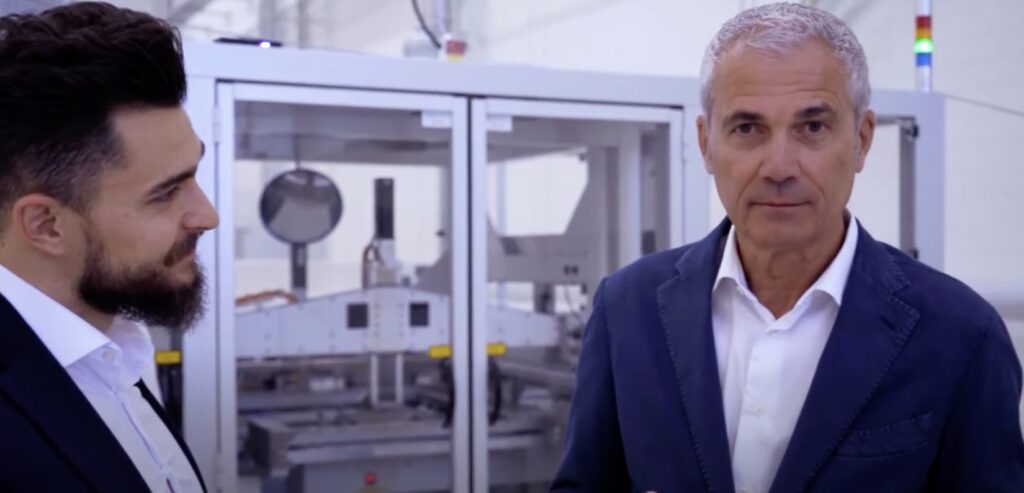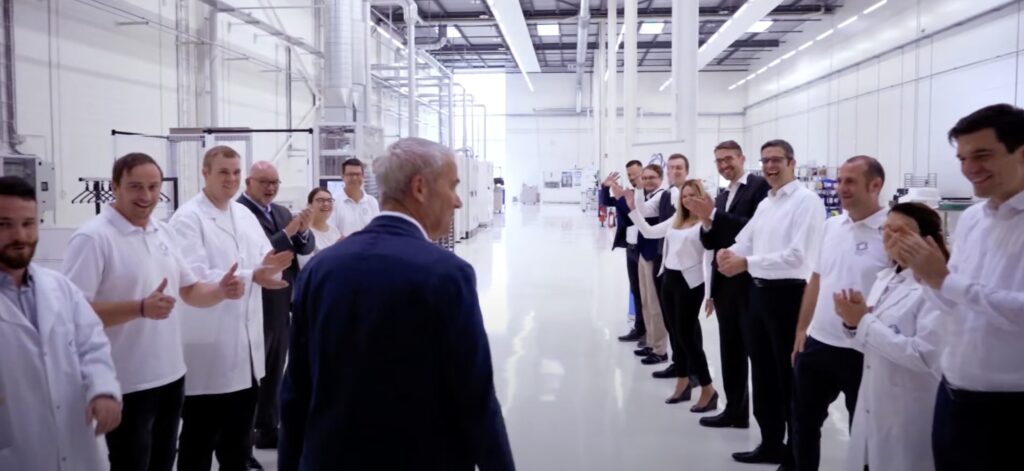I wasn’t familiar with Exentis Group before reading about its intention to go public today. Until now, I could only find one other news story detailing the company’s achievement in securing a customer for ceramic 3D printing and another on their opening of an innovation center. Puzzling as this may be, Exentis continues to mystify in various ways beyond this.
The company has developed a technique that employs multiple screen print screens in succession for layer-by-layer production. In a carousel-type setup, the company claims it can achieve high-volume production with 70-micron wall thicknesses (though elsewhere, 50 microns are mentioned) and two-micron smoothness at 30,000 dpi. Furthermore, Exentis asserts the capability to process metals, ceramics, biomaterials, and medical materials. The company claims that individual systems can produce millions of components per year. Production volumes of 500,000 and more are also discussed. In a video, the company claims that a system can manufacture a million parts a week. On the Exentis website, the firm states that one system is capable of producing 200,000,000 tablets.
The company has sold 20 systems to customers. Additionally, it offers an Additive-Manufacturing-as-a-Service (AMaaS) model, which means you don’t buy a machine but instead, the firm produces items for you.
In a three-year-old video above, you can see how the system operates. The company mentions that it can produce the screens in a day. It also claims to have “4100 patent claims,” although elsewhere on the same site, it states it has 4496 patent claims. The meaning of this discrepancy, and what it means by the term patent claims is unclear. Additionally, it mentions having 200 patents and 31 patent families. A search on Google Patents reveals 35 patents, among which the one related to the squeegee seems especially significant. Whichever number of patentish things the firm may own, they are available for licensing.
Under applications, Exentis lists stator and rotor sheets for engines, filters, medicine, fuel cells, and batteries. There is mention of a curing step, and notably, there is no depowdering process, which leaves some uncertainty about how the metal manufacturing aspect functions. However, one particularly exciting application is in the medical field.
Exentis has granted Laxxon Medical the “exclusive worldwide rights for the development, production, and commercialization of innovative drug delivery systems based on a worldwide patented large-scale 3D screen printing technology.” Notably, the arrangement is meant for contract drug manufacturer Hovione to mass 3D print tablets at its manufacturing facilities. in Portugal. The potential for creating individual dosage forms, gaplets, and textured medicines. The specifics of the payment, royalty, or ongoing fees for this licensing agreement are not clear. The medical production of tablets and pills stands out as a promising area for success. Given that this has already been licensed, it dampens the value of the rest of the business. In an available video, we get a glimpse of the firm’s facility, and another claim highlights the freedom in material choice.
I’m very skeptical about Exentis because we’ve learned so little about it over the ten years it has been in business. In its financial report for the first half of 2023, the company reported CHF11.4 million in revenue and an EBITA margin of 18%. The firm had revenues of CHF26 million in 2022. It also states its hope to expand its service capacity to 50 systems. Another document reveals that it sold four new systems in December of last year, with two destined for tablet production and two for new energy. In that document, it anticipates revenues of CHF50 million based on current “outstanding offers” of CHF50 million. The company also mentions that the annual report will be released in April, but there is no indication whether the annual report will be available to potential investors, as no date has been set for the IPO. Instead, the company is merely indicating that it is IPO-ready and could go public, which is not particularly informative.
I want this to be true, I really do. But, for now, the company simply has not provided enough information to establish its credibility. It all feels very sketchy and is poorly communicated. I really hope that in the future we could lend this credence because I want this to be real.
Subscribe to Our Email Newsletter
Stay up-to-date on all the latest news from the 3D printing industry and receive information and offers from third party vendors.
Print Services
Upload your 3D Models and get them printed quickly and efficiently.
You May Also Like
Consolidation in AM: How 2025 Is Shaping the Industry’s New Normal
The first half of 2025 has been marked by a clear shift in the additive manufacturing (AM) industry. Companies are no longer just focused on developing new tech by themselves....
Etsy Design Rule Change Reduces Selection of 3D Printed Goods
Online marketplace Etsy has implemented a rule change requiring all 3D printed goods on the site to be original designs. The update to the site’s Creativity Standards states, ¨Items produced using...
U.S. Congress Calls Out 3D Printing in Proposal for Commercial Reserve Manufacturing Network
Last week, the U.S. House of Representatives’ Appropriations Committee moved the FY 2026 defense bill forward to the House floor. Included in the legislation is a $131 million proposal for...
Transforming From Tourist to Native: Duro CEO Michael Corr Explains Why the Company Rebuilt its PLM Software on AI
In these early innings of the AI boom, many market analysts have expressed concern that AI spend has gotten too far ahead of the technology’s proven ability to deliver significant...


































